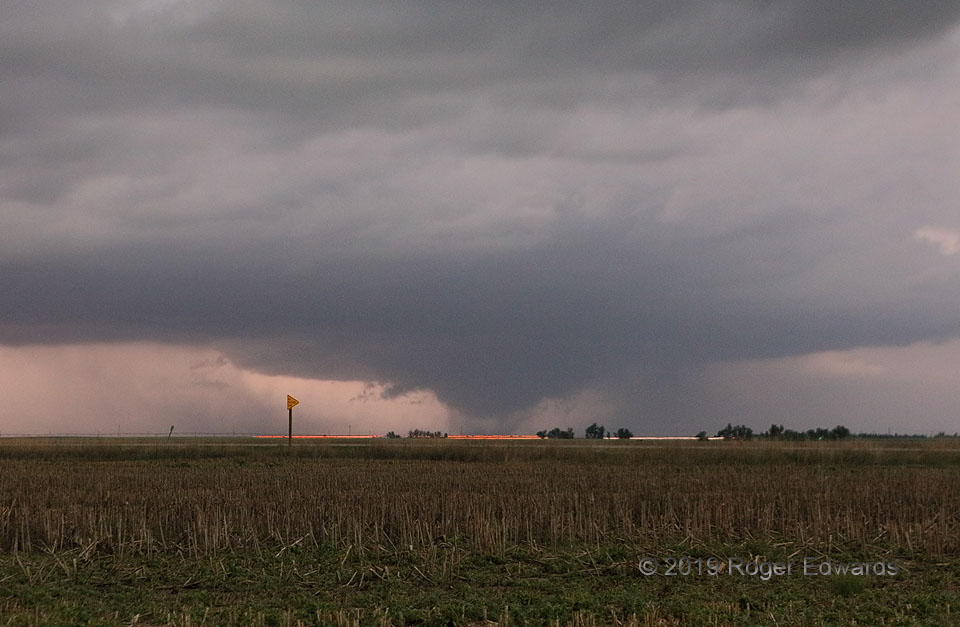Photographing a tornado at night is challenging for many reasons, the first of course being safety: don’t get hit by the tornado, lightning or traffic! Fortunately, the best angles for spotting and shooting night tornadoes are well outside their paths—usually to the right and a bit behind the mesocyclone. That’s because the parent supercell’s lightning production often maximizes north (opposite side) of the circulation, also keeping one about as safely removed as possible from most of the storm’s ground-directed discharges. Then one just has to find a safe parking spot, with few or no viewing obstacles between there and the current and projected tornado positions. Here, the tornado was moving diagonally left to right and away from us, with the lightning-filled core behind, which was ideal. The circulation was a little more distant than I’d like, but we had to play catch-up to the supercell after being stuck at a roadblock behind its previous tornado.
With a subject as fast-evolving as a tornado, tripodded time exposures can be tricky, aiming to avoid overly smudging the features from either the tornado’s own motion, or from wind-shake on the camera. The key is to be brief yet bright with the exposure. How? Use high ISO to bring out the most ambient light possible, and let go of the shutter the instant after even the faintest flashing on the far side of the rotation. In this case, the ground had been lit by in-cloud flashes high aloft early in the exposure, followed soon by a moderately vivid in-core discharge behind the tornado that silhouetted its wide, bowl-shaped condensation funnel and dusty multivortex structure. Later I got lucky with a cloud-to-ground stroke on the right. To the eyeballs, it was nowhere nearly this bright outside! The streaks of light are cars on a two-lane highway. I wonder if the occupants knew what was going on to the north.
1 NW Bucklin KS (17 May 19) Looking N
37.5566, -99.647
